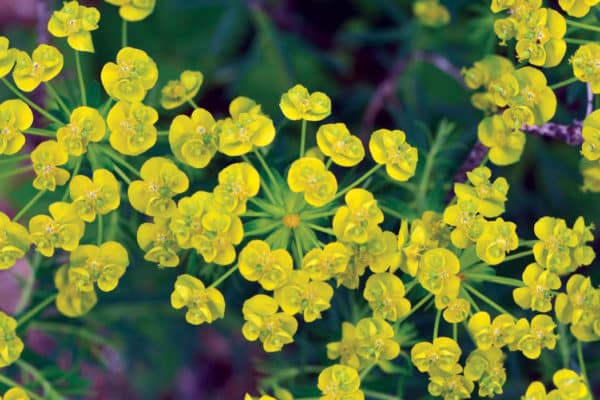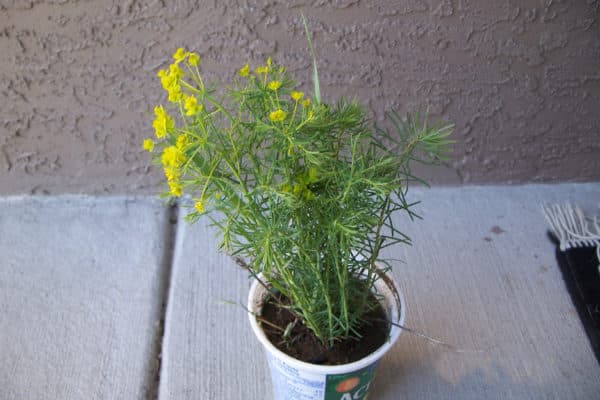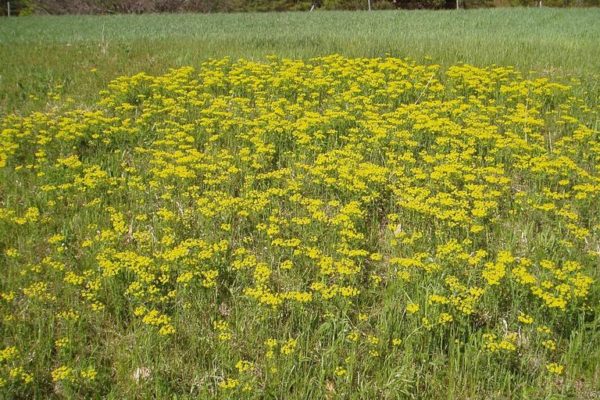Cypress spurge
Warning
Toxic to humans, livestock and wildlife when consumed, or when its sap (latex) contacts skin. The sap causes nausea, vomiting and diarrhea when eaten. It can cause blindness if it gets in people’s eyes and skin contact causes redness, swelling and blisters.
About This Species
Cypress spurge (Graveyard weed) was introduced to North America from Europe as an ornamental plant but has since escaped. It prefers sun but tolerates shade as well. It can be found growing in open, disturbed sites like meadows, pastures, and roadsides. It grows quickly and aggressively, releasing chemicals from its roots which stop other plants growing near it. This helps it crowd out native species. Cypress surge is designated as a Management species by the BC Provincial Priority Invasive Species List.
How to Identify
Cypress spurge is a perennial herb that can be 10–60 cm tall growing through creeping rhizomes.
Flowers are yellow to green and turn red at maturity.
Leaves are 2.5–3 cm long, thin, waxy, and blue-green that spiral around the stem.
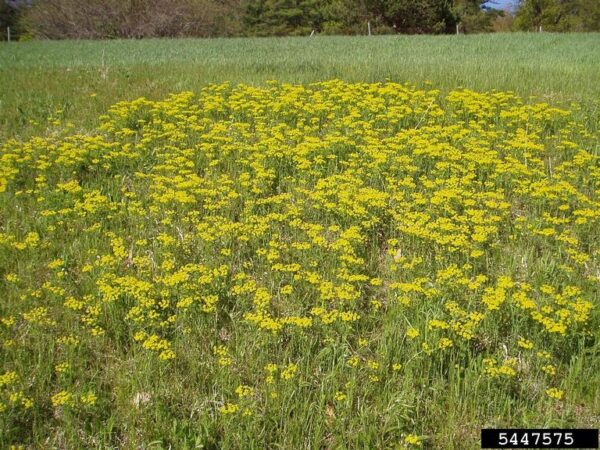
Take Action
Prevention is the best approach.
- Spurges Factsheet PDF
-
If you need advice about invasive species on your property or you are concerned about reported invasives in your local area, contact your local government or regional invasive species organization.

PlayCleanGo
Learn about best practices

Plantwise
Learn about best practices
A few non-invasive alternatives to plant instead of Cypress spurge include:
- Broadleaf stonecrop (Sedum spathulifolium)
- Cushion spurge (Euphorbia polychroma)
- Lance-leaved stonecrop (Sedum lanceolatum)
- Martin’s spurge (Euphorbia x martinii)
- Wood spurge (Euphorbia amygdaloides)
- Yellow ice plant (Delosperma nubigenum)
REPORT TO PROTECT BC’S BIODIVERSITY
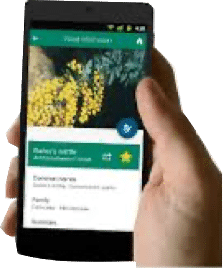
Use the app
Observe and report to protect BC’s biodiversity

Report through this website
Use our form to tell us what you’re seeing and where.



